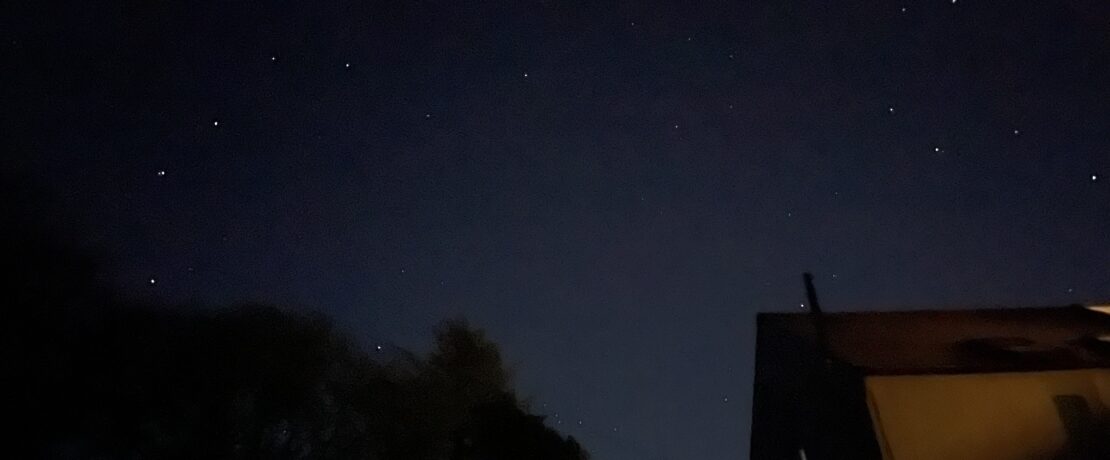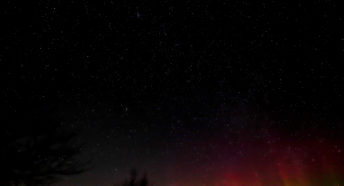Stargazing Sanctuaries
4.5% in the North West of England Embrace Life Within True Dark Skies Amidst Light Pollution
CPRE volunteer Anthony Jolly reflects on the results of CPRE’s 2023 star count in Lancashire, Liverpool City Region and Greater Manchester
In an era where urbanisation and technological advancements continue to shape our surroundings, the impact of light pollution affects one our most enjoyable and breathtaking activities, star gazing. In April of 2023, CPRE once again asked the nation to count the number of stars visible in the Orion constellation to gauge the extent of light pollution. Compelling insights have emerged, shedding light on the magnitude of this issue and the potential pathways towards preserving the beauty of our celestial landscape.
Star count results
The survey, conducted with the purpose of assessing light pollution and identifying areas with true dark skies, unveiled a nuanced panorama of starry visibility across the surveyed regions. While the majority of urban areas, including Stockport District in Greater Manchester, Chorley District in Lancashire, and Trafford District in Greater Manchester, fell within the 6 to 10 stars counted range, comprising 41.4% of the total observations, rural and less densely populated regions presented a contrasting scenario.Within densely populated urban centres like Salford District in Greater Manchester, Lancaster District in Lancashire, and St. Helens District in Merseyside, the 0 to 5 stars counted category dominated, encompassing 23.3% of the observations. This stark reality underscores the profound impact of excessive artificial lighting in obscuring the natural brilliance of the night sky in these localities, It paints a sobering picture of a world where the celestial wonders that have inspired poets, astronomers, and dreamers for millennia are gradually fading from public consciousness.
Conversely, regions such as Ribble Valley District in Lancashire and Oldham District in Greater Manchester exhibited a relatively higher star count, indicating the presence of communities actively engaged in adopting responsible lighting practices and preserving the sanctity of their nightscapes. These conscientious efforts are reflected in the relatively clearer night skies, signifying a growing awareness of the importance of mitigating light pollution. The relatively smaller yet significant clusters of regions registering 16 to 30 stars counted, comprising 11.3% of the total, indicate the presence of communities actively engaged in adopting responsible lighting practices. These conscientious efforts are reflected in the relatively clearer night skies, revealing a growing awareness of the importance of preserving the intrinsic beauty of the cosmos. Surprisingly, a notable subset of locations, accounting for 4.5% of the total observations, surpassed the 30 stars counted threshold. These areas, often nestled in remote, less populated regions, provide a glimmer of hope, representing the preservation of an unblemished nightscape. West Lancashire District and Wyre District in Lancashire topped the charts. They offer a poignant reminder of the captivating allure of unadulterated starry nights, beckoning humanity to rekindle its reverence for the celestial wonders that have guided civilizations throughout history.
Roadmap for communities
The findings from this comprehensive survey provide a roadmap for communities to reevaluate their relationship with the night sky and usher in a new era of responsible environmental stewardship. While acknowledging the challenges posed by light pollution, there is an encouraging narrative of optimism and potential for positive change. Armed with this newfound understanding, communities have the opportunity to leverage this data as a catalyst for change, fostering a collective commitment to balance progress with the preservation of natural nightscapes. By embracing innovative lighting solutions, such as the use of energy-efficient technologies and shielded outdoor fixtures, municipalities can curtail unnecessary light pollution without compromising public safety or development.
The identification of regions that have successfully maintained true dark skies serves as an inspirational model for emulation. Communities can draw inspiration from these pockets of celestial sanctuaries, encouraging the implementation of similar practices and policies to nurture and safeguard their own night-time landscapes.CPRE champions community-driven initiatives that promote responsible lighting and celestial appreciation programs; individuals can actively engage in preserving the timeless wonder of the starry night. The implications extend beyond the immediate ecological impact to encompass the cultural and societal significance of celestial observation. Encouraging a renewed fascination with the mysteries of the universe, communities can foster a sense of wonder and connection to the cosmos, inspiring the next generation of astronomers, scientists, and dreamers.
As we wrap up another year of star counting, we can say ultimately, this survey serves as a testament to the power of collective action and the transformative potential of embracing a harmonious relationship between human development and the natural world. By weaving together the tapestry of technological advancement, environmental consciousness, and cultural heritage, communities can pave the way for a future where vibrant urban landscapes coexist seamlessly with the timeless serenity of the star-filled heavens.
Join our mailing list to be informed about our 2024 star count.






